When I go to the farmers’ market and buy a dense-fleshed fish like swordfish or tuna, I’m inclined to look to southern Italy or Sicily for a way to cook it. This may not be entirely logical, but some of our best experiences of such fish have involved anchovies, capers, olives and suchlike savory ingredients.
Last week, what Jackie and I came upon was dogfish – a small shark that in various guises is widespread on both sides of the Atlantic and into the Mediterranean. We don’t see it often, but we’ll sometimes buy it when we do: For one thing, it makes a terrific fish fry whether in egg and breadcrumbs or coated in batter. At least in our area, it is always sold skinless, which is as well, since it takes a little skill, a little strength and a pair of pliers to yank the tough skin off the slender body. And it is typically sold filleted, although it is a cinch to cut off the belly flaps and remove the cartilaginous spine, which is all that needs to be done (sharks lack a bony skeleton and don’t seem to miss it). All I needed to do when I got the two five-and-a-bit-ounce (160-g) portions home was to trim off a bit of tough white connective tissue where the fins had been attached to the body. Note: You may not find dogfish in your market, but today’s dish would be delicious with any fairly substantial fish: skate, mackerel, bluefish and swordfish come to mind, but even a nice thick piece of cod would serve admirably.
The plan that evolved on the way home from the market was to use those southern Italian flavors with a mess of onions, a little garlic and a tablespoonful of vinegar for brightness, and that’s what I set about doing – initially at any rate, because the plan changed as I tasted. For two portions, I sliced two medium onions and half a clove of garlic and cooked them in olive oil over medium-low heat with salt, black pepper and three or four leaves of fresh sage (thyme would be grand too, not that any herb is absolutely necessary here). When they were cooked but neither browned nor mushy, I stirred in the fillets from three salt-packed anchovies that I’d soaked, de-spined and left in olive oil for an hour or so. (Use oil-packed anchovies right out of the jar by all means – their intensity might be even better here.) After stirring and poking with a spoon to make sure the anchovies had fallen apart, I added a tablespoon of capers, roughly chopped; here, I really do prefer the flavor of the salt-packed kind, which need to be rinsed and patted dry before using, though capers packed in vinegary brine are okay so long as you are very careful about rinsing. A tablespoon of wine vinegar turned this into something akin to an onion chutney, using that term in the loosest possible way. I turned off the heat and left the mixture to cool until later. This could be done half an hour or longer in advance, though I would worry about fading if it were cooked half a day or a day ahead of time.
My idea had been to include olives, but when I tasted this I found it so densely savory that another umami element would have been too much. In fact, what the mixture needed was something to lighten it both texturally and in its flavor. Lemon came to mind, but its acidity seemed a little extreme. Orange was the strongest candidate, and it happened that a couple of blood oranges were right there on the counter waiting to become the garnish for a pre-dinner negroni or two. I sacrificed one of them to the cause of cookery: I peeled it to the flesh and “filleted” it – cutting between the membranes to yield clean segments – something that’s easy to do once you’ve seen it, as you can all over the Web. I set the orange segments and their juice aside: I didn’t want them sitting in the onion mixture too long lest they lose their freshness of flavor. (With its extra tartness, a blood orange was ideal for this dish, but a medium-sized orange orange would have done the job almost as well.)
Cooking the fish was simple. I dried it well with paper toweling, seasoned it with salt and pepper and lightly coated the nicer side with flour, then pan fried it in olive oil over medium to medium-high heat for three or four minutes on the first side, then for a minute or 90 seconds on the second. Timing will depend on what fish you use and how big the pieces are. If you like to broil or grill your fish, do it: as long as the pieces are nicely browned, it doesn’t matter much how they get that way.
When the fish is nearly done – say, when you’ve just turned it over in the pan – reheat the onion mixture and add the orange segments and their juice. Taste for seasoning, spoon half the mixture onto each (warmed) dinner plate and lean a piece of fish on the onions, leaving room for any side dish you may decide to add. I can’t think of a better one than rösti, and Jackie and I made some with three medium potatoes and four tablespoonsful of clarified butter.
The original idea for the onion condiment, with olives, would have been good but might have cloyed half way through dinner. The orange segments held our interest and lent just the right lightness to the dish.
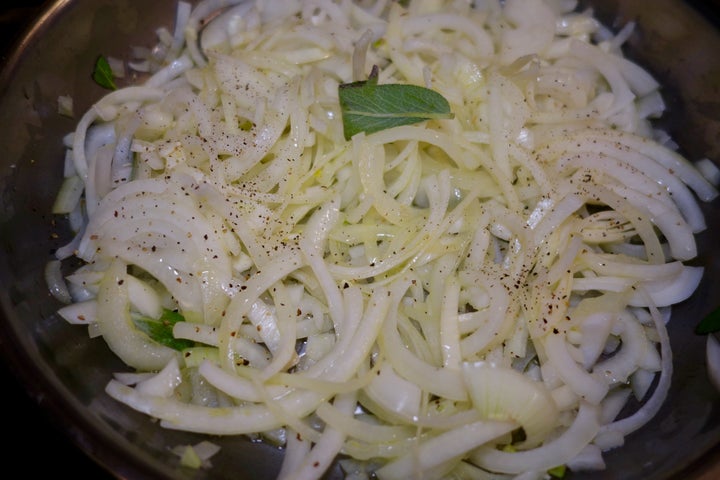
Onions under way
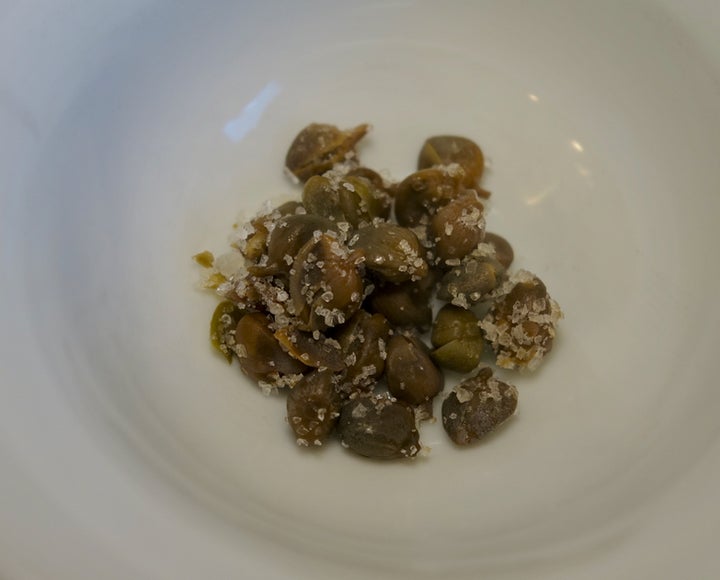
Salt-packed capers before rinsing and roughly chopping
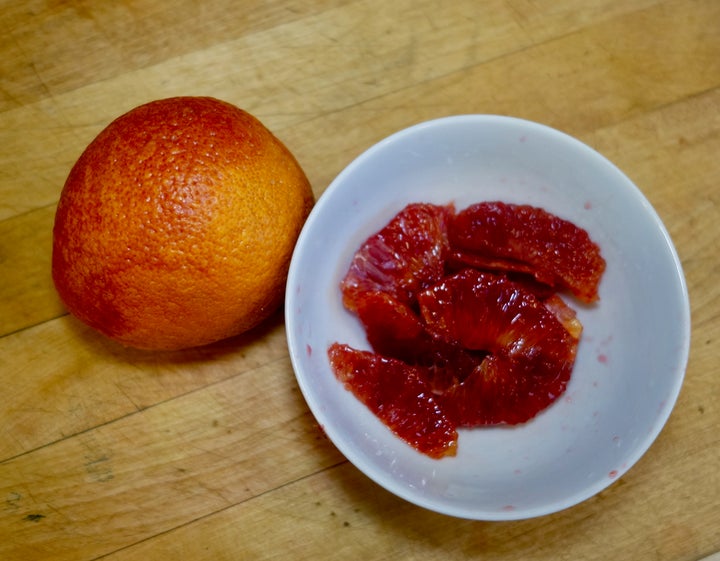
A blood orange “filleted” and one more for show
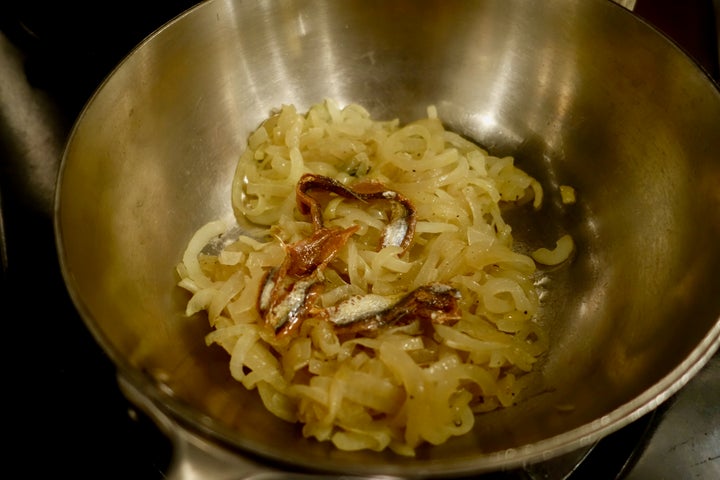
Anchovies added to onions
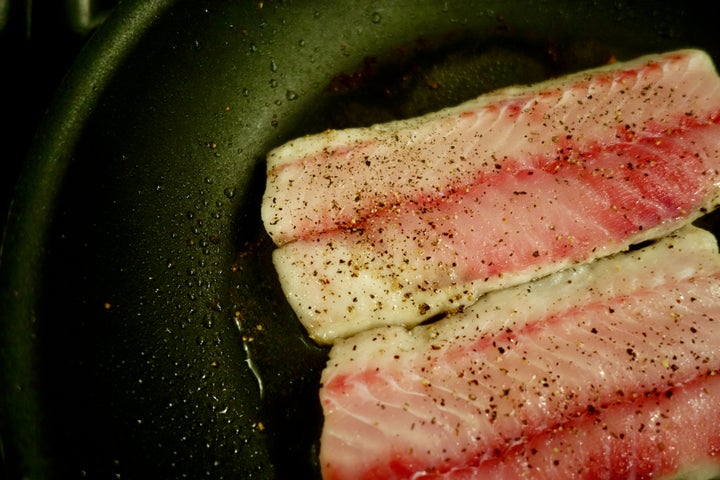
Dogfish in the skillet, partially cooked
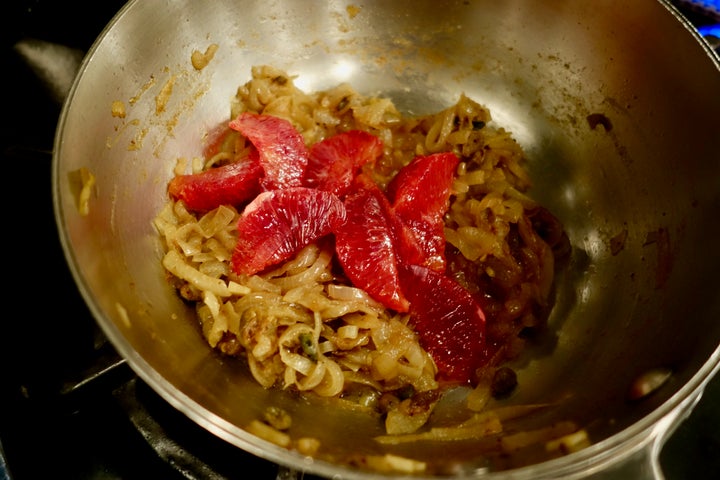
The orange segments and juice lighten and brighten the savory onion mixture
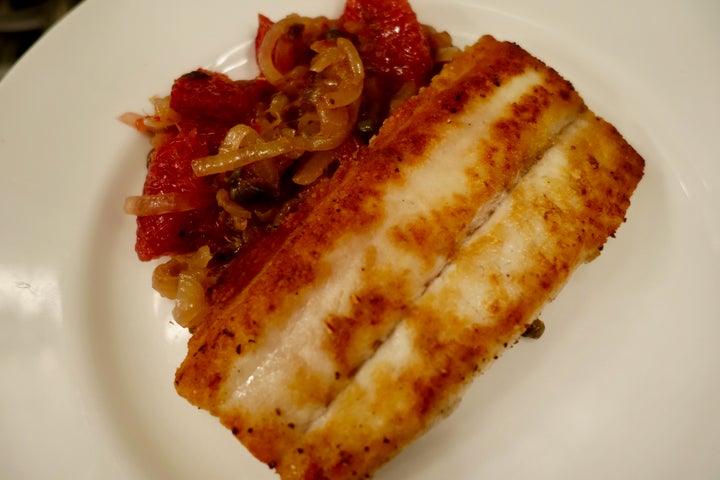
Dogfish with onions and blood oranges
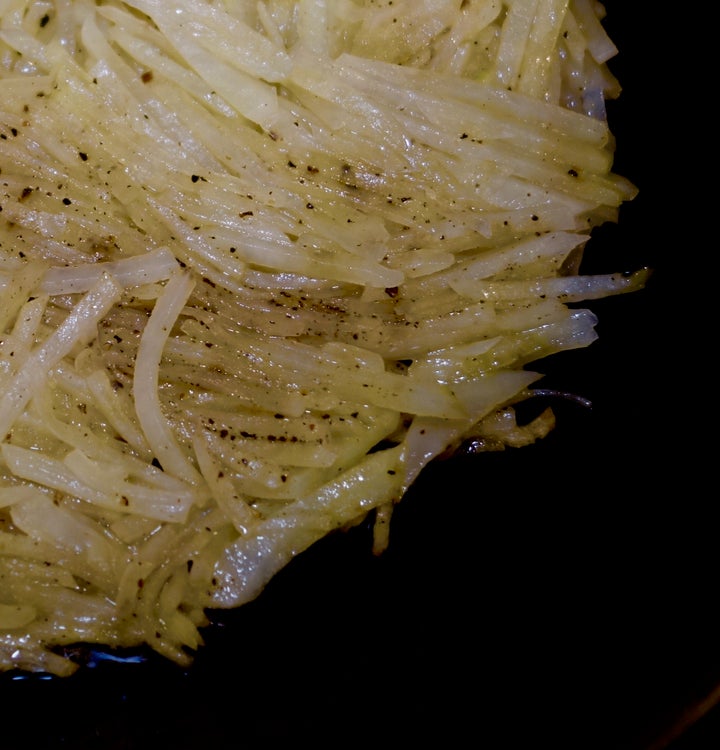
Rösti in the pan - hand-julienned, if you please
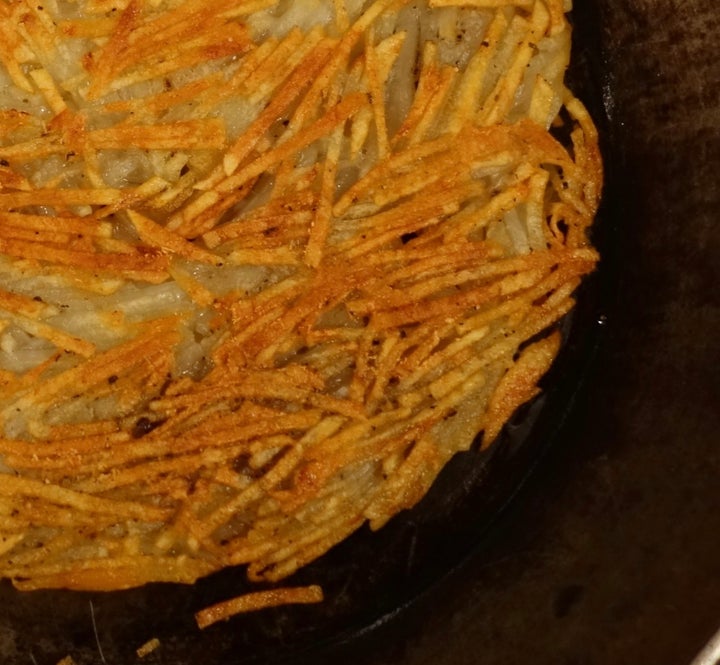
Rösti, crisped. The perfect accompaniment for this dish